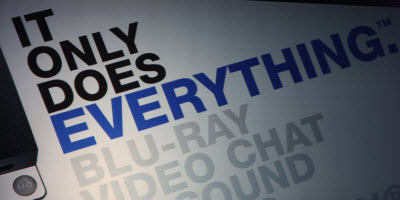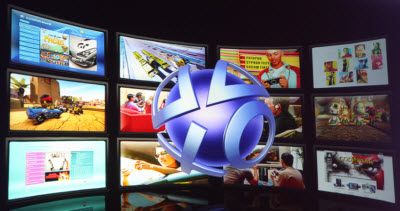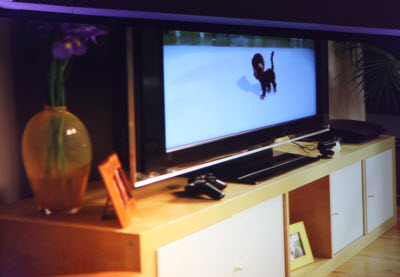The living room is getting awfully crowded now that the Internet has come into it. But Sony is trying to take advantage of all that confusion by pushing the PlayStation 3 as the machine that can do everything.
While Nintendo’s marketing is laser focused on games, Sony’s marketing describes the PS3 as “it only does everything.” That is now helping the PS3 gain new momentum in the market, according to Peter Dille, senior vice president of sales and marketing at Sony’s U.S. game division, speaking at the MI6 game marketing conference today.
Sony is enjoying better success in the console war. But it’s hard to say whether its repositioned marketing has helped, or if the market has simply grown up to embrace the original message behind the PlayStation 3.
AI Weekly
The must-read newsletter for AI and Big Data industry written by Khari Johnson, Kyle Wiggers, and Seth Colaner.
Included with VentureBeat Insider and VentureBeat VIP memberships.
 At first, features such as Blu-ray movie playback made the PS3 jaw-droppingly expensive at $600 and ungainly in size at its introduction in 2006. Sony consequently lost its lead in consoles, falling behind both Nintendo and Microsoft. Now the PS3 is slimmer, with a base model that sells for $299. Better games — Sony-published PS3 titles have a 91.3 out of 100 rating from Metacritic — are also being published. That puts the company back in the horse race.
At first, features such as Blu-ray movie playback made the PS3 jaw-droppingly expensive at $600 and ungainly in size at its introduction in 2006. Sony consequently lost its lead in consoles, falling behind both Nintendo and Microsoft. Now the PS3 is slimmer, with a base model that sells for $299. Better games — Sony-published PS3 titles have a 91.3 out of 100 rating from Metacritic — are also being published. That puts the company back in the horse race.
Instead of marketing the PS3 as a hardcore game console, the company is touting the fact that it can play high-definition Blu-ray movies, host video chats, and play music. On top of that, consumers are finally ready to network all of their devices in the home together via the web, and the PlayStation Network and PS3 are a solid platform to do that.
“We see our opportunity as not just a core gamer box,” Dille said. “PlayStation has always been a very big tent. The idea of the digital living room has been around for a while, but now consumers are ready for it.”
 Consoles have become the most common way to connect living room devices to the web, and so Sony is positioning the PS3 as a “total entertainment console” for the home in its family-oriented TV commercials. There are multiple commercials (like a kid complaining about grandma watching Blu-ray movies non-stop on the PS3) and they’re running in a lot of different mass-market media.
Consoles have become the most common way to connect living room devices to the web, and so Sony is positioning the PS3 as a “total entertainment console” for the home in its family-oriented TV commercials. There are multiple commercials (like a kid complaining about grandma watching Blu-ray movies non-stop on the PS3) and they’re running in a lot of different mass-market media.
In a move atypical for the famously fragmented gadget empire, Sony is also starting to coordinate the rest of the company’s efforts with the PS3. Kaz Hirai, who once ran just the game unit, is now in charge of networking all of Sony’s products together. The company will push 3D Bravia TVs as great for gaming and movies this summer, and then it will hawk the PlayStation Move gesture-control system in the fall.
Users are starting to fill up the high-capacity hard drives built into the PS3 with movies and other content. And Sony is pushing non-game digital content on the PlayStation Network. That includes its Qore digital magazine, Pulse news show, and reality TV show, The Tester, about a competition to become a game tester working for Sony.
 The PlayStation Home virtual world is also launching efforts aimed at monetizing the network, including the free-to-play game Sodium, where the company makes money by selling virtual goods inside the game. Sony is also targeting ads at gamers based on what they buy on the PlayStation Network.
The PlayStation Home virtual world is also launching efforts aimed at monetizing the network, including the free-to-play game Sodium, where the company makes money by selling virtual goods inside the game. Sony is also targeting ads at gamers based on what they buy on the PlayStation Network.
The PSPgo handheld is pricey and hasn’t taken off yet. But the message there is that people can take their content from the PlayStation Network and carry it around with them, starting a movie at home and finishing it during the commute. The idea, Dille said, is that the walls of the living room are getting knocked down, and the hope is that Sony can launch devices that lead the consumer to engage in new ways of having fun that the consumers didn’t know they wanted. Dille said the company is in discussions with retailers about how to revive the PSPgo.
“The digital living room is the future of digital entertainment and the battle is already being fought there,” Dille said. “The number of players in the living room is increasing. Those who focus on ease of use and the value across many devices are going to hit the tipping point.”
Lastly, with so much moving to the Internet and the ability to update games and machines because of that, Dille said that marketing now starts with the shipment of the product. It doesn’t end when it ships, as in the past. That’s just the beginning of Sony’s hard sell.
VentureBeat's mission is to be a digital town square for technical decision-makers to gain knowledge about transformative enterprise technology and transact. Learn More
